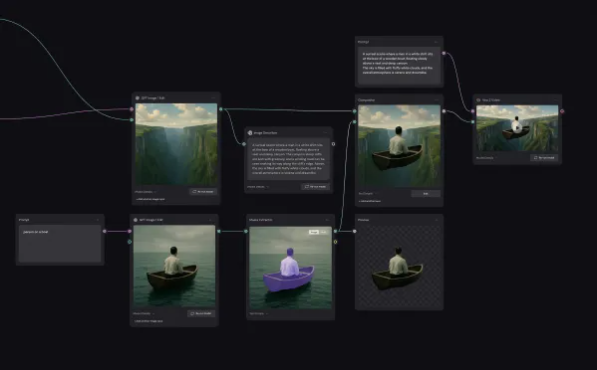As AI generation tools move from "single-point creation" to "multi-model collaborative creation," the war for design platforms has entered a new dimension. Recently, the global top design collaboration platform Figma announced the acquisition of Weavy, an AI image and video generation startup that had been in operation for only one year, integrating it as a new sub-brand—Figma Weave. This acquisition not only brings Weavy's 20-person team into Figma but also marks Figma's official full upgrade from "design collaboration" to an "AI-native content generation and editing" ecosystem.
Multi-model combination + node-based creation: A designer's AI "mixing console"
Weavy's core innovation lies in its node-based workflow: users can freely combine outputs from different AI models on an infinite canvas—for example, first using Flux or Ideogram to generate product main images, then calling Sora, Veo, or Seedance to generate dynamic videos. Throughout the process, users can adjust lighting, color, angle with prompts at any time, and perform layer edits on images and videos. All operations are connected through visual nodes, supporting branching, mixing, and iteration, achieving an integrated "exploration-editing-finalization" process.

Figma CEO Dylan Field praised this design: "It achieves an amazing balance between simplicity, usability, and professional control, making AI-generated content truly become a 'creative instrument' in the hands of designers."
Weavy will continue to operate independently, with future deep integration into the Figma ecosystem
Although Weavy will still operate as an independent product for now, Figma has clearly stated that its technology will be gradually integrated under the Figma Weave brand and connected with the Figma main platform. This means that in the future, designers will be able to directly call multi-model AI generation capabilities within Figma, seamlessly embedding AI outputs into prototype design, brand visuals, or product presentation processes, completely breaking the fragmented experience of "generation-import-adjustment."

Weavy, founded in 2024, is headquartered in Tel Aviv and recently completed a $4 million seed round led by Entrée Capital, with investors including Designer Fund, Founder Collective, and Micha Kaufman, founder of Fiverr. Although the valuation of this acquisition was not disclosed, the speed shows the rarity of its technology.
AI design platforms enter the integration phase, Figma accelerates positioning
Figma's move is not an isolated case. This month, the AI search platform Perplexity acquired the team from the design platform Visual Electric; in April this year, the AI generation company Krea also secured $83 million in funding. The industry is shifting from "a variety of tools" to "platform ecosystem integration."
Figma, with its absolute dominance among designers, has chosen to quickly fill its AI generation gap by acquiring Weavy. This move not only solidifies its leadership position in the product design field but also aims to build Figma into a design operating system for the AI era—where creativity is no longer limited to a single model, but becomes a multidimensional intelligent flow that designers can freely schedule, mix, and refine.
As AI generation evolves from "one-click output" to a creative process that is "orchestrable, iterative, and collaborative," Figma Weave may be the answer to the next generation of design workflows.
